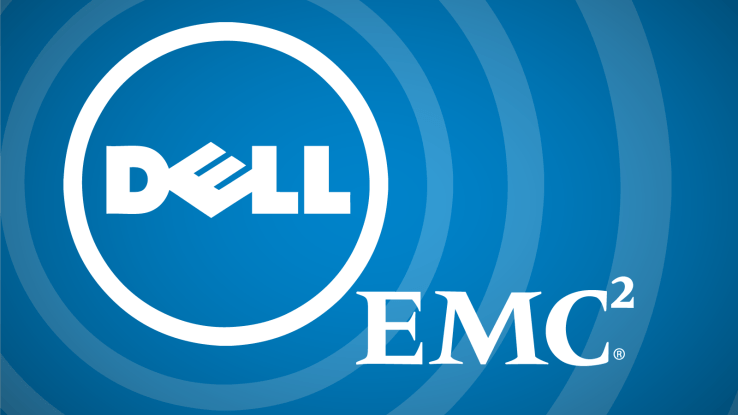In the brave new enterprise world, organizations will be awash in big data, and it’s against this backdrop that
Dell bought EMC this week for the astonishing sum of $67 billion.
All of this data needs to be stored somewhere and that’s where EMC comes in. Dell already has been
selling storage of course. In fact, it bought EqualLogic in 2007 for $1.4 billion, which seemed like a tidy sum at the time.
This deal is about getting much bigger, but at a cost — $40 billion in debt financing,
according to the Wall Street Journal. Dell said it would finance the deal in part using EMC’s cash on-hand, and boldly predicted it could pay off the rest in 18 to 24 months after closing the deal, presumably believing that sales from the combined entities could bring it back to financial equilibrium quickly. That’s optimistic to say the least
With EMC, Dell could be going after all of the storage marbles, but it could take more than those combined sales to make this deal work. It could also involve getting rid of some of the pieces from EMC that aren’t necessarily part of the core mission
If that’s the case, it would seem that Dell has to make some decisions here. If this were a cut and dried acquisition, you could point to Dell’s core business and say anything that doesn’t serve that core should be shed. The problem is figuring out the core business in this instance. Dell has its fingers in a lot of pies and some broad ambition in the enterprise.
In theory, you could say it keeps EMC storage, cloud and big data — and gets rid of everything else.
Yet Michael Dell
in a letter to EMC customers about the deal wasn’t giving anything away:
I am excited to work with the EMC, VMware, Pivotal, VCE, Virtustream and RSA teams, and I am personally committed to the success of our new company, our partners and above all, to you, our customers.
It’s a nice sentiment, but it becomes a bit like a team trying to find ways to shed salary to get under the salary cap. Sometimes you have to let go of players you like to make the economics work.
What To Keep, What To Dump
Using that as a metric, it makes it easier to start by selling off shares of VMware and its $30 billion in market cap to help pay for this deal. It’s entirely probable that Dell would still maintain some stake in the virtualization giant, but it’s a good way to move that needle and erase a substantial piece of the cost of this acquisition.
It would
very likely dump Documentum, Captiva and the rest of the content management division.
It could say buh-bye to Virtustream,
the cloud management company EMC bought just last May for $1.2 billion.
It gets somewhat tricky around security and archiving as these things are tangentially related to storage, but if it’s about paying for the deal, it could ditch RSA,
the security company EMC bought in 2006 for $1.2 billion — and perhaps its data protection and archiving pieces too.
One open question is what it will it do with
Pivotal Labs. EMC spun out Pivotal a couple of years ago with GE and VMware when it recognized it was getting big and slow and needed an independent piece to help drive some innovative thinking. Now that Pivotal is part of Dell, it could sell off the EMC share of it or keep it for its big data and cloud pieces — and a combined Dell/EMC could use some of that agility right about now.
Fortune’s Dan Primack looked at this from a bit of a different angle, speculating that
Dell may shed its PC division and sell it to HP to raise some cash.
Show Me The Money
It’s truly a case of a billion here, a billion there and pretty soon you’re talking real money. As it sells these pieces off, assuming that’s the plan, it would presumably start to recoup some of its investment. At the same time of course, it’s not just sitting there — it’s making money.
It’s hard to know just how much value these pieces might have in the open market, especially when everyone knows it’s an extremely motivated seller, but the fact is that Dell has to focus on something here, and it seems that storage is as good a place to make a stand as anywhere.
The trouble with this approach, if this is Dell’s thinking, is the changing nature of the storage market. There are a number of players out there including Amazon Web Services, Pure Storage (which went public last week),
DataGravity (which is run by Paula Long, who helped found EqualLogic)
Nutanix and others nipping at the heels of traditional vendors like EMC, looking at creative ways to attack the growing storage problem.
If it’s about data, EMC certainly is a formidable player, but is it the right player to propel Dell in the enterprise datacenter market? Dell made an enormous bet that EMC is the right choice.
Time will tell if it was right. In the meantime, it has to be planning a huge garage sale to help pay for that trophy house it just bought.
 The storied 911 will not be immune from Porsche’s electrification plans and that could be a good thing. The car company’s CEO recently told Autocar that the hybrid 911 “will be the most powerful 911 we’ve ever had; 700 bhp might be possible.” Count me in (as long as someone buys it for me).
The storied 911 will not be immune from Porsche’s electrification plans and that could be a good thing. The car company’s CEO recently told Autocar that the hybrid 911 “will be the most powerful 911 we’ve ever had; 700 bhp might be possible.” Count me in (as long as someone buys it for me).






